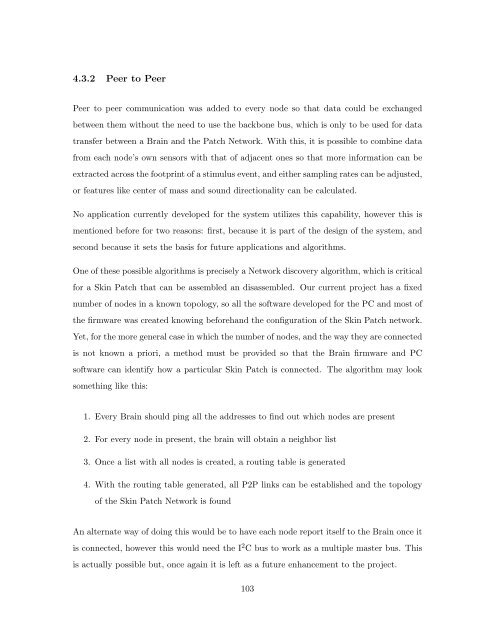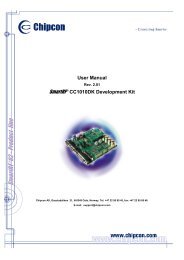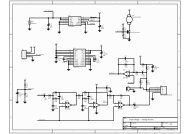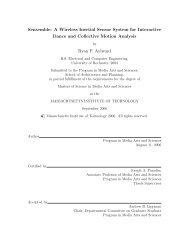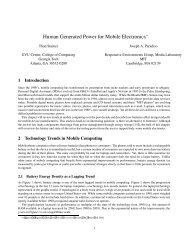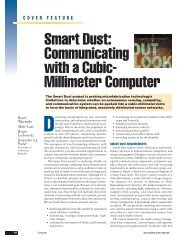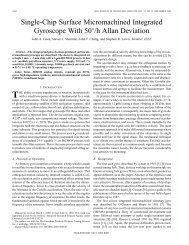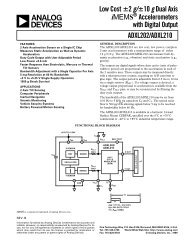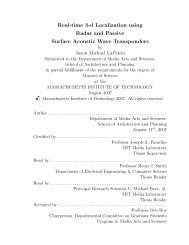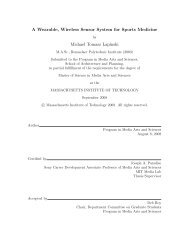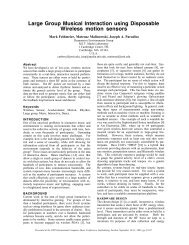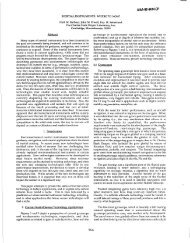S.N.A.K.E.: A Dynamically Reconfigurable Artificial Sensate Skin ...
S.N.A.K.E.: A Dynamically Reconfigurable Artificial Sensate Skin ...
S.N.A.K.E.: A Dynamically Reconfigurable Artificial Sensate Skin ...
You also want an ePaper? Increase the reach of your titles
YUMPU automatically turns print PDFs into web optimized ePapers that Google loves.
4.3.2 Peer to Peer<br />
Peer to peer communication was added to every node so that data could be exchanged<br />
between them without the need to use the backbone bus, which is only to be used for data<br />
transfer between a Brain and the Patch Network. With this, it is possible to combine data<br />
from each node’s own sensors with that of adjacent ones so that more information can be<br />
extracted across the footprint of a stimulus event, and either sampling rates can be adjusted,<br />
or features like center of mass and sound directionality can be calculated.<br />
No application currently developed for the system utilizes this capability, however this is<br />
mentioned before for two reasons: first, because it is part of the design of the system, and<br />
second because it sets the basis for future applications and algorithms.<br />
One of these possible algorithms is precisely a Network discovery algorithm, which is critical<br />
for a <strong>Skin</strong> Patch that can be assembled an disassembled. Our current project has a fixed<br />
number of nodes in a known topology, so all the software developed for the PC and most of<br />
the firmware was created knowing beforehand the configuration of the <strong>Skin</strong> Patch network.<br />
Yet, for the more general case in which the number of nodes, and the way they are connected<br />
is not known a priori, a method must be provided so that the Brain firmware and PC<br />
software can identify how a particular <strong>Skin</strong> Patch is connected. The algorithm may look<br />
something like this:<br />
1. Every Brain should ping all the addresses to find out which nodes are present<br />
2. For every node in present, the brain will obtain a neighbor list<br />
3. Once a list with all nodes is created, a routing table is generated<br />
4. With the routing table generated, all P2P links can be established and the topology<br />
of the <strong>Skin</strong> Patch Network is found<br />
An alternate way of doing this would be to have each node report itself to the Brain once it<br />
is connected, however this would need the I 2 C bus to work as a multiple master bus. This<br />
is actually possible but, once again it is left as a future enhancement to the project.<br />
103


